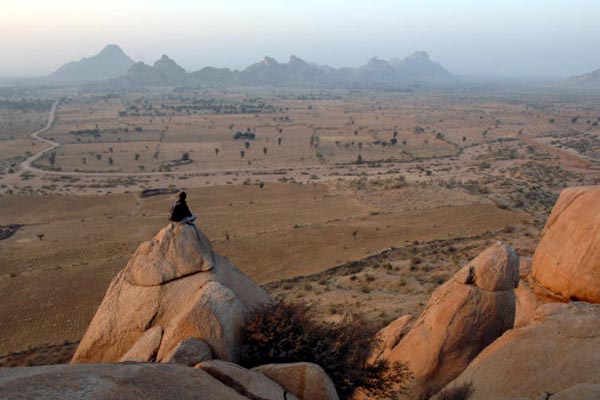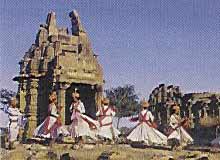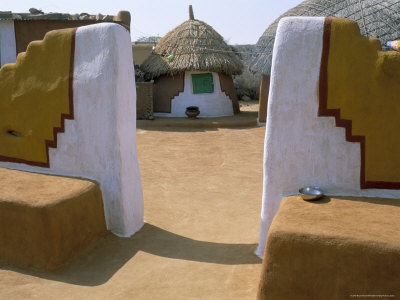
History of barmer barmer is a beautiful desert city , located at a distance of about 157 kilometers Jaisalmer , 485 km from Bikaner , 222 km from Jodhpur and 588 km from Jaipur and is easily accessible from these cities. It is the headquarters of the barmer district of Rajasthan and is a quaint settlement of cheerful and earnest people. barmer is the district headquarters. Balotra, Guda Malani, Siwana , Jasol and Chohatan are other major towns. barmer is tiny yet lively town in desert - drenched sands, barmer is a miniature Rajasthan with all its colour, warmth and tradition. Once called Mallani (12th century AD) the present barmer district, formed in 1949 upon the merger of Jodhpur state in the United States of Great Rajasthan, is a cluster of ancient paraganas- Mallani Shiv, Pachpadra, Siwana and the Chohatan area. Although a barren land with harsh climate and tough terrain, barmer is known for its rich crafts, dances and music. Once on the ancient camel trade route, the town in now the centre for wood carving, pottery, carpets, intricate emboidery work, block printed fabrics and multi hued traditional costumes. One can witness the rural Rajasthan, the small villages with mud-walled houses decorated with delicate folk motifs and colourfully attired people on the way,While a trip to barmer.  barmer is part of the Great Indian Desert or Thar Desert. Like all other districts in the desert region, barmer is known for its folk music and dance. The Bhopas (priest singers) are found in barmer, who compose music in honour of the deities of the region and its war heroes. The other folk musicians come from a community called the Muslim Dholis (drummers) for most of whom this is the only means of livelihood. Every year in March , the desert town is at its colourfull best during the exuberant barmer festival. The festival is the best time to plan a visit to barmer. barmer was a beehive of activity till a few centuries ago, and a number of important kingdoms flourished at various times in the district during the medieval age. The chief principalities of barmer at the time were Khed, Kiradu, Pachpadra, Jasol, Tilwara, Sheo, Balotara and Mallani. It was the Panwara clan which had strong links with the Solanki dynasty of Gujarat, whose sphere of influence extended right across the barmer region at the time. Later they wrested Mandore, which was the former capital of Jodhpur and held it for a while. Meanwhile, Khed and Mallani districts were captured by the Guhil Rajputs who were ruling over Mewar at the time. In 1212AD Rao Siha, founder of the Rathore clan, conquered Khed in barmer district and planted the Rathore flag in the area. The region was regained by the Guhil Rajput Pratap Singh, but was later reclaimed by the Rathore Rao Asthan. Not much is known about the history of barmer for a while after that until a ruler Tribhuvansi ascended the throne, which led to fratricidal feud with his cousin Mallinath. The ambitious Mallinath (after whom the town of Mallani was later named) sought the assistance of the Sultanate ruling at Delhi at the time and defeated Tribhuvansi's army in 1374.  barmer Ruled by Mallinath , After his triumph, Mallinath went from strength to strength, and by the time he died in 1399 the entire region of barmer was under his sway and was even called Mallani at the time. He was the first ruler of barmer who was called Rawal, and legend has it that he possessed divine powers and a goddess once appeared before him. How much the people revered him as a demi-god can be ascertained from the fact that there is a temple built in his memory on the shores of the river Luni, near Balotara. After his death, his son Jagmal succeeded him and his descendants came to be known as the Mahechas. But the empire split up into many constituents and they were as many as 18 chiefs at one point of time. Inevitably, with no strong central authority, it was soon conquered by the state of Jodhpur.
barmer Ruled by Mallinath , After his triumph, Mallinath went from strength to strength, and by the time he died in 1399 the entire region of barmer was under his sway and was even called Mallani at the time. He was the first ruler of barmer who was called Rawal, and legend has it that he possessed divine powers and a goddess once appeared before him. How much the people revered him as a demi-god can be ascertained from the fact that there is a temple built in his memory on the shores of the river Luni, near Balotara. After his death, his son Jagmal succeeded him and his descendants came to be known as the Mahechas. But the empire split up into many constituents and they were as many as 18 chiefs at one point of time. Inevitably, with no strong central authority, it was soon conquered by the state of Jodhpur. This was the state of affairs, when the British came to barmer in 1836, and the town was thenrefore governed by a superintendent. Ultimately barmer was integrated with the state of Jodhpur on 1st of August 1891. Ultimately with Indian independence in 1947, both barmer and adjoining Jodhpur became part of the state of Rajasthan. |

